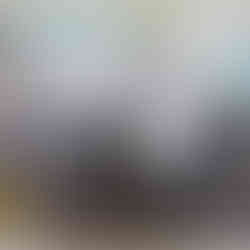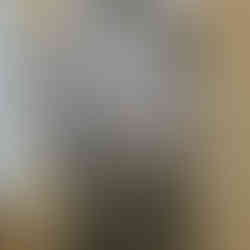Studio Visit: Jennifer Celio, Natural Selection and the Art of Survival
- artandcakela
- Aug 3, 2017
- 5 min read

Jennifer Celio. Photo Credit Gary Brewer.
Studio Visit: Jennifer Celio, Natural Selection and the Art of Survival
By Gary Brewer
“Humanity is a biological species, living in a biological environment… The earth is our home. Unless we preserve the rest of life, as a sacred duty, we will be endangering ourselves by destroying the home in which we evolved, and on which we completely depend.”
E.O. Wilson
We live in a time of great possibilities and dire consequences. To look at the relationship between humans and nature is to see a history of humans shaping the world from the birth of agriculture, through the industrial revolution, to the present. The last 200 years have left a heavy mark on the world and on the health of our environment.
Jennifer Celio has made environmental issues a central part – the heart of her work for years. Not with a heavy-handed didactic-ism and a moral outrage, but in a human scaled voice, with wit and humor. One of the better attributes of our species is our humor, it helps us to connect and engage, allowing us a moment where our shared humanity opens up a conversation. “I wanted my work to create a two way conversation, not to hammer a point in, but to use humor to draw someone in, making them think about these issues. At my exhibits I have heard people responding to my work, noticing something that would make them laugh and then they would speak about the issue that the piece addressed. It is a way to start a dialogue with someone, to inform them.” Her earlier work used this tact, a sleight of hand to engage the viewer in complex issues about our world, the environment and our relationship to it, issues that need to be addressed literally for our survival.
These pieces entailed drawings of urban landscapes, a stand of trees, the ocean. Seemingly normal scenes of life where one element would add a dystopian slant to it, drawing attention to an issue or simply being a reality whose intrinsic irony says it all. In one drawing in her studio there is a stand of trees, beautifully rendered in pencil on paper. The trees seem to be a fragment of a forest, isolated in a grouping surrounded by the whiteness of the paper. After a moment, one notice’s that the trees are in fact camouflaged cell towers, their ‘tree-ness’ is obfuscating the technology beneath, it is both comic and strange the world that we inhabit.

Jennifer Celio. Photo Credit Gary Brewer.
In an amusing coincidence, another piece in Jennifer’s studio is a drawing of the ‘THUMS, Island White’ in Long Beach, California, adjacent to where she now lives. It is an artificial island built for oil drilling in 1965, they have ‘camouflage’ covering a drilling rig to look like a hotel tower, waterfalls etc. Jennifer recently moved into an apartment facing the ocean with a view of this very island directly in front of her new home. In her drawing the island is rendered relatively straight, a Humvee is parked next to a quaint home, a pelican covered in oil fly’s by, oil sludge from a pipe flows into the ocean, a helicopter hovers nearby while a pod of dolphins leap from the polluted waters. The drawings speak to these issues of pollution and of damaging the environment with a directness ricocheting off of a darkly ironic humor – the coincidence of this move into her new home writes a new verse into this poetry of dystopian irony.
For years Jennifer worked in this ‘tight’ approach to rendering and came to a point where her creative needs took front stage and forced a move away from these drawings. She needed something fresh and unexpected to emerge in the work, an exploration of purely formal invention, which might have led to an entirely different type of work. “I needed to move away from these tightly rendered drawings, the pre-designed images were restraining me, I needed to grow creatively to explore process and include spontaneity and discovery in my art. When I began I did not know if my environmental narrative would remain within the work. As I moved into these new pieces, a fresh approach to the dialogue articulating the human/nature relationship emerged.”
In her current work she may start with a specific idea, or a fragment of an image that engaged her. On a recent road trip to San Francisco while driving near the sea with the Bay Area’s ever-present heavy marine layer bearing down from above, a light rain was falling with the late afternoon light shining low on the horizon beneath the dark gloom. In this band of light, a small section of rainbow was shimmering, an optimistic fragment in an otherwise dark world. She started a work based on this memory imprint.
Loosely applying charcoal dust to the surface of paper laying flat on a table and applying water, the spontaneous and organic forces mimicking natural forces came into play. Using a brush she engaged with this ‘living’ process creating swirling stormy atmospherics. The rainbow element suggested the narrative from Wizard of Oz, so a house floating away on the storm emerged. From this Jennifer intuited that the vertical composition needed more height, she added another sheet of paper and brought in a waterfall with greenery on its rocky banks and a bright yellow ‘sky’ above. Finally a building is pinned to the wall on the left side of the piece, each element begetting the next in a poetic linked verse of formal discovery leading to a narrative.
Jennifer said of these new works. “The loose spontaneous improvised abstract elements are my representations of nature, of natural forces. The hard-edged structures that suggest buildings and man made elements are culture, the impact of human activity on the planet. It is a spontaneous dialogue from which the process of discovery leads to a narrative.” These narratives emerging from an interior process of creative discovery add a depth to these new works, there is an emotive force that is fresh and true and that adds pathos to these paintings.
A new piece Jennifer has just begun has a much more specific idea behind it. There is a mid-century Church off of 405 from which she has appropriated architectural elements to set up a dialogue between faith and science. “ Some religious people are happy to embrace certain aspects of science that suit their needs, but deny others that do not. This whole denial of climate change from Evangelicals and others is a dilemma that I want to address in this piece” It is early in its inception but a physical structure that Jennifer is building represents the church architecture, its mid-century design plays a role in the dialogue between science and religion. Watercolors of icebergs are on the wall with elements of florescent Plexiglas that will be placed in front of the watercolors adding both a chromatic arctic ‘light’ and play off of science and industry.
We spoke about our optimism, that with all of these challenges we face, we now have the means to change the course of our culture. But that sadly suffering will be an instrumental part in putting the fire under us to make those changes rapidly. She shares these concerns and has a fascination with this moment in time, one where we can find the creativity to reshape our selves and our relationship to this precious world of which we are a part of, we just need to find the collective will to accomplish it.
Jennifer is in a Two person exhibit with Helen Chung at 18th Street Arts Center, Santa Monica, October 14-November 10, 2017 and a group show called “Static” at Durden and Ray, Los Angeles, November 4-25, 2017.
#losangeles #losangelesartist #jennifercelio #openstudio #art #painting #interview #makingart #studiovisit #onlineartmagazine #environmentalart #losangelesart #contemporaryart #contemporarydrawing #intheartiststudio #multimediaartist #artandcake #longbeachart #longbeach #ArtandCakeLA #fineart #artists #artist #garybrewer #mixedmedia #arts #environment #artreview #nature #artmagazine #ArtandCulture #dystopian #artiststudio #drawing #longbeachartist #NaturalSelectionandtheArtofSurvival
























